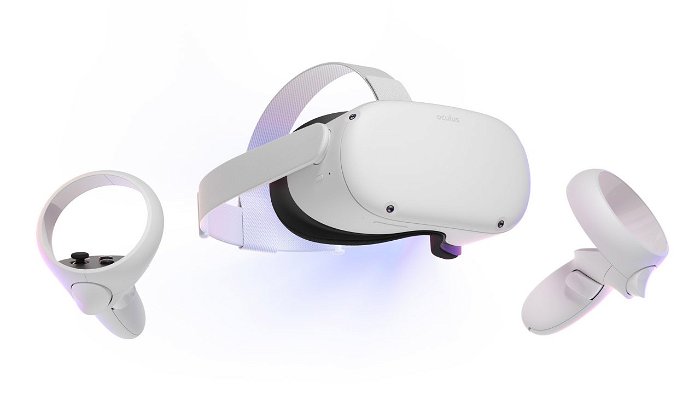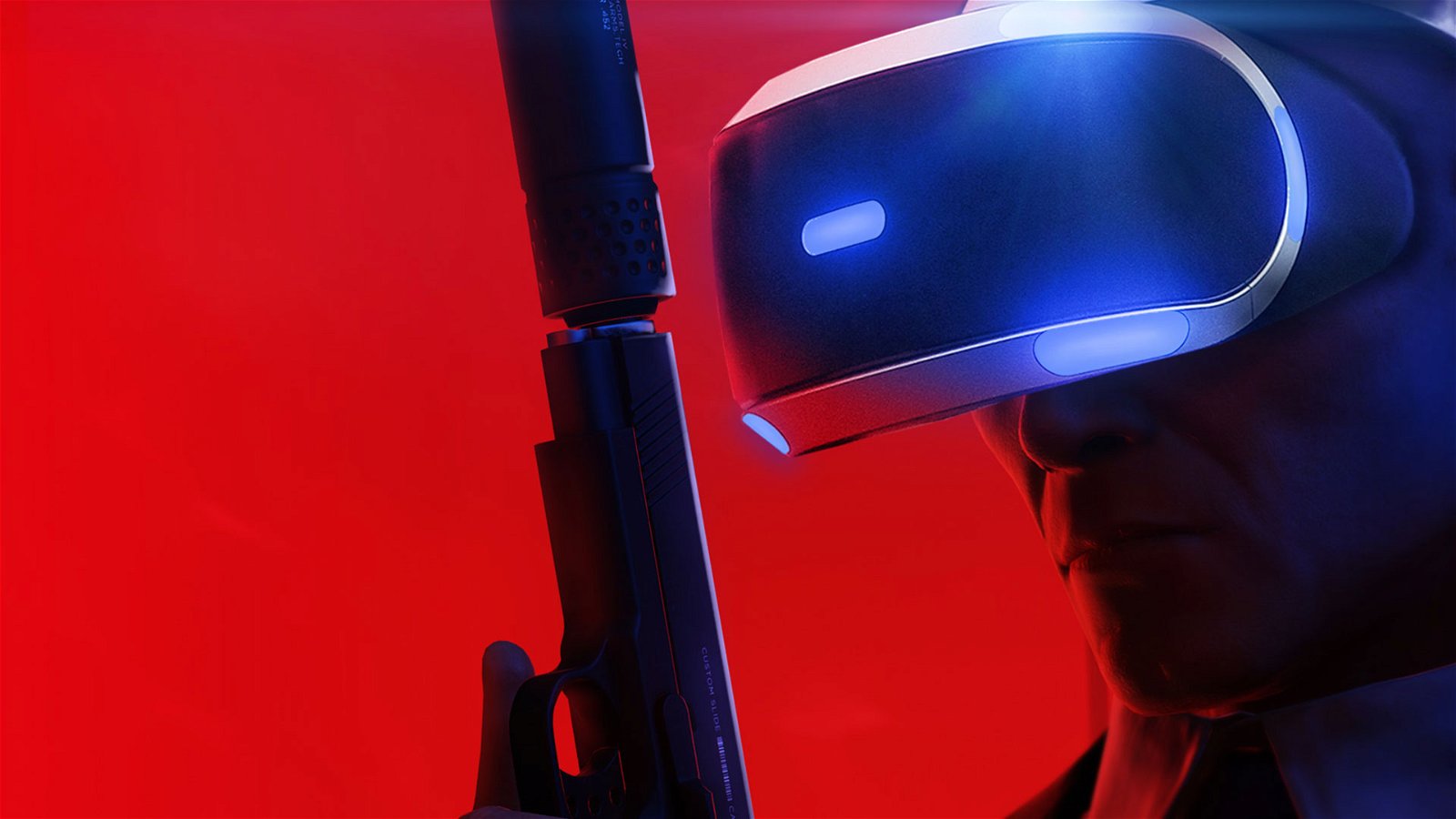There’s more to VR than video games. But it’s also VR’s niche as a high-end console which holds the platform back from mass adoption worldwide. When we consider a population of new (and welcome) VR users for 2021, it’s not the biggest mountain-moving chunk when compared to mainstream consoles and the PC demographic. Of course, the platform is only as strong as its public opinion. Early and fresh adopters have every reason to like VR; as much as others have their own reasons to hold back on a headset. As a new year and the post-holiday sales bring in new VR users, they’ve also dropped into a relatively slow state of things.
It’s understandable to accept the real underlying problems which hold VR back from a promised future. There’s no denying it’s expensive. Most killer apps lack major franchise IPs from consoles. Who can forget the motion sickness and VR’s physical comfort woes? On a niche teeter-totter, VR slides towards gaming and less on practical work in automotive, manufacturing or content creation. The biggest issue slowing VR down? The matter of having these issues exist into 2021; just half a decade since “VR” turned into a household name.
I didn’t sink into my role as its sole VR editor without some heartbreak. One came from observing its slow, but gradual climb to an unknown peak for years. Past 2020, the platform didn’t realize its multi-billion dollar dream as a wonder utility. Another woe was observing a significant population still being held back by a price tag as the technology became wireless, slimmed-down and easier to use. The biggest pain was seeing the technology realize its visions, but mostly on its hardware as VR skeptics and frustration grew.
I happened to pick up the Oculus Rift CV1 a year after on Boxing Day 2017 (plot twist: there was never a discount on it). At the first opportunity I played Job Simulator and Space Pirate Trainer, a part of me wondered if Laurence Fishburne would knock on my door with jelly beans. But there was a special risk to having invested a PC for college work, only to find out it barely met Rift requirements. My risk came with a slight hook. The idea of simulated dreams or going straight into a realm was unbelievably fictional across (your) favourite science-fiction media. If the technology kept evolving in real life, then I would keep sticking with it for years. There still isn’t any feeling like cutting through droids with a life-sized lightsaber, having your own IMAX theatre at home, sharing a car ride with Eminem or firing a weapon in VR. As a storytelling tool, VR’s focus on presence is what helps viewers see a bit more past their flat screens. There’s a new level of understanding real locations or a scene by visiting it yourself (its journalism uses are another rabbit hole).

In short, it’s as cool as I imagined it would be. This is why everyone should be able to enjoy it as equally and ubiquitously as the first colour TV or Mac (when those were first introduced to the world as niche products).
Carrying a hefty love for the platform into CGMagazine with a chance to write about it is only half the story. It’s a thought which drives a big part of my responsibility to give VR reviews and mainstream coverage at CGM. If you’ve heard my voice on the Pixel’s & Ink game podcast, chances are you’ve also heard some of the skepticism, dismissals and general perceptions which have hit the VR platform hard across the years. But those are also fair opinions which (if addressed with tangible solutions) could actually give VR a real impact in more aspects than games.
Specifically, VR started walking the tightrope as early as 2016. The immersive 360 platform saw a resurgence as Oculus and HTC made their first commercial headsets. A real boost would come from PlayStation jumping into the ring with PSVR with an accessible gateway for PS4 owners. Make it open to the public? Check. But this came with some new checkboxes; high $549-$999 costs, its gatekeeping for high-end PCs and lack of first-party support. In turn, the VR platform hit a wall. The dream of having VR accessible to everyone was limited by its technology. The HTC Vive would become an open VR platform which used Steam and other external software from third parties. Oculus would establish its own premium ecosystem even prior to its Facebook acquisition, with exclusive content like Robo Recall and Medium still giving consumers a real spending decision. At the time, both of their hardware were investment-heavy, to the point where it could be a niche for enthusiasts and enterprise.
Oh, and forbid me from mentioning “sensors”.
That’s not to say “games” have to be the first thought for VR. The obvious prospect stories in medical sectors, industrial design and automotive concepts add to a public patience for the technology. It’s simulation factor saves “reality expenses”. Training experiences and crafting objects in VR only take away time instead of materials or other added costs. With high-powered PCs, VR had also evolved under its gamified shadow and into places like Solidworks. As one of the world’s most popular CAD design apps, VR would only help engineers manipulate components closer in life-sized proportions. Demo3DVR is just one of the partnerships with Solidworks; a sign industries are giving headsets a much-needed investment. In practical uses, vehicles and machines can be built before spending a single factory penny. But that’s just one aspect of a bigger picture for VR, where mass adoption includes its non-gaming uses.
According to DesignNews, hundreds of manufacturers adopted VR and AR since 2019 to trial and error product issues. Software with integrations like Demo3DVR were a few VR-injected tools connected to the worldwide assembly line. Of the 215 companies surveyed, a majority saved 20 percent in costs for materials, waste and product defects. To help craft some of VR’s more industrial applications, it would require a hefty group of developers with skill in blending game design with creation tools. But that’s just one instance of how VR would slowly grow into mass adoption without the game console framing. Without reiterating, VR’s survival also teeters on a chunk of industries outside of its playable experiences. Its potential as an all-purpose computer are clear, but still aren’t as generally adopted as an HDMI cable (and that’s just a ridiculously extreme comparison of mass adoption next to RealD 3D).
VR would lose some of its biggest problems in 2019. The Oculus Quest would be the closest dream first realized in fiction. At a surprisingly fast development time and turnout, consumers could finally get a “true” VR headset which didn’t need a PC. It also was a self-contained one without sensors (hiss). Exactly like Ready Player One, VR users could literally move around their real spaces relatively to their games thanks to inside-out tracking. It was a simple wear and play experience which pulled more skeptics into the platform. For a time, VR’s legitimacy climbed back up. The public would keep an open mind for buying a headset.
This should be VR’s easy sailing after its niche turbulence. Far from the TV’s adoption for game and lifestyle, VR moves more dependently on the former. It’s worth noting the Quest helped VR content cross over the $500 million mark from 2019-2020. Like most sequels, popularity for the first-of-its-kind Quest spawned the Quest 2. According to Nielsen’s Superdata, the Quest and Quest 2 carried almost 70% of VR sales last year. But while 2019’s figures counted 5.8 million overall, it dropped to 4.9 million in less than a year. The VR market took a hit from losing two things; phone-based products like Google Cardboard/Daydream and declining PSVR sales ahead of the PS5 launch. The prospect of Oculus Link gave PCVR a new life as Half-Life: Alyx became one of the first real killer apps. Valve’s return to Half-Life was even enough to cause overall VR sales to jump by a quarter. The company’s own Valve Index also saw a shortage as the ongoing COVID-19 pandemic created more VR interest than headsets available.

Let’s talk about Half-Life: Alyx’s impact for PCVR. The game is fine as per our review. But it also runs on a niche format which set VR back in 2016. Alyx requires high-end PC parts for the best experience. Existing PC owners are likely to upgrade. Those without PCs are out of luck. Immediately, the obvious barriers to VR mass adoption are pre-Quest ones. They also come with an even higher price tag than standalone headsets. But somehow, Alyx proved that VR content alone could still cause headsets like the Valve Index to run out in certain parts of the world (despite layers of requirements). Did I mention a need for a Link cable for the PC?
Overall VR sales in 2020 were established at almost 5 million worldwide. But according to Facebook CEO Mark Zuckerberg in their latest Q3 earnings call, it would take 5 million more for a worry-free outlook (at least through the Oculus platform).
“The big milestone that I’m focused on here is we want to get to 10 million active units in our VR systems,” Zuckerberg said. “Because we think at that point, that’s when it will become — the ecosystem will really be able to be self-sustaining and accelerate where independent developers will be able to start.”
Immediately after, Zuckerberg also noted it would “economically make sense” for independent developers to use Oculus VR above gaming. VR’s applications for industry and enterprise would also affect the way AR is developed as they would share a similar OS. This casts a bigger uncertainty for the up-and-coming AR platform which is being framed for productivity beyond gaming. AR’s mass adoption could become more legitimized, while it wouldn’t have gaming as a support. But any step taken towards augmented reality gaming would only boost AR’s potential while VR stays its course. In contrast, virtual reality would have to take notes from AR for it to grow faster than it could with games. AR has the added benefit of learning from VR’s well-worn path, but veers differently from the video game business model (or gamification).

It’s obvious that VR’s current road to mass adoption is on the playable side. But games alone are also keeping the platform afloat in a slower pace. Nielsen’s predictions aren’t bold, since its total game revenue will only climb by 2% in 2021. VR only fits in a smaller chunk within that percentage, with COVID-19 affecting headset production. Of course, this makes mass adoption an even bigger test of patience for those deliberating on VR. With gaming taking hits for overall platforms, VR is likely to face a bigger growth stunt in comparison to consoles from Xbox, PlayStation or Nintendo.
The Oculus Quest 2 isn’t an end-all-be-all device by any means. Its continued focus for an accessible, wireless and standalone VR experience is what consumers in 2016 waited for. Its reduced costs only adds to a prospect of cheaper iterations until VR is ubiquitous (and of course, affordable). But the outcome also leans on the patience of consumers still holding back on purchases. For consumers to remain interested for mass adoption, it’s important to look at VR’s bigger (intended) purposes as a computer or high-end console. One thing is clear: a long-time marketing focus for VR gaming has given AR a clear contrast ahead of its big moment.




